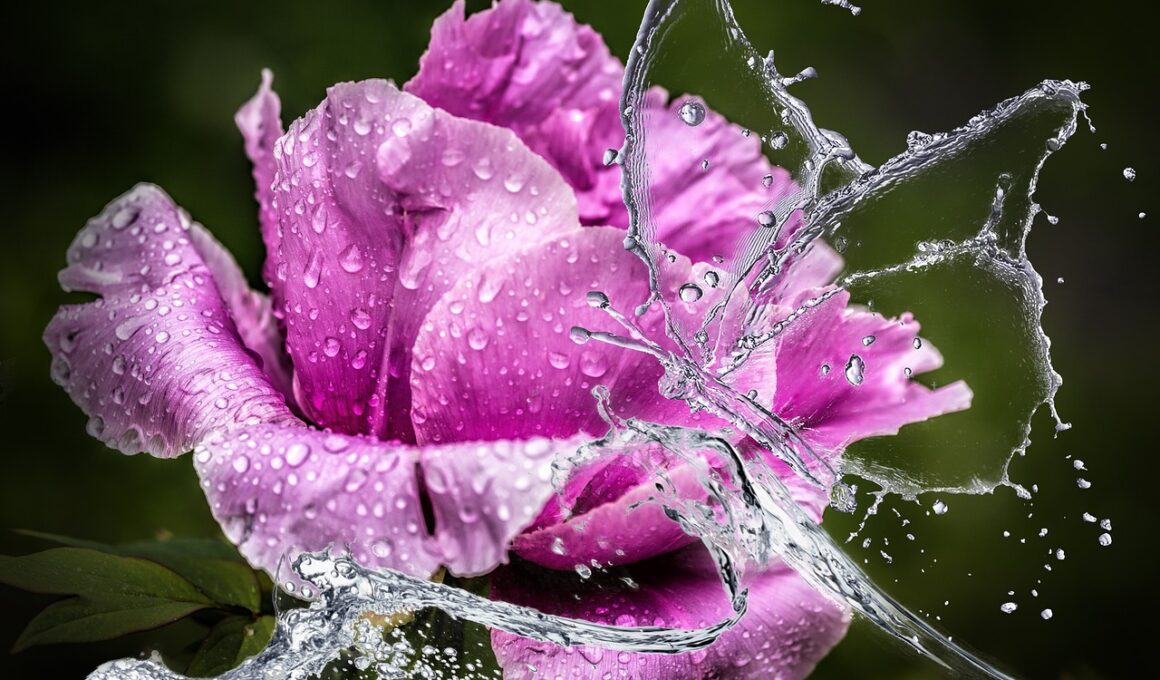If you’re someone who loves gardening, you might have heard about perennial plants. Perennials are those plants that continue to grow from their roots for more than two years. It means that they come back year after year, and you don’t need to replant them every season.
But are peonies perennials? The answer is yes! Peonies are one of the most popular and loved perennial plants that grace gardens around the world. Peonies are flowering plants that belong to the Paeoniaceae family. They are native to Asia, Europe, and North America.
Peonies are known for their large, showy flowers that come in a range of colors, including pink, red, white, and yellow. They are highly valued for their beauty and fragrance and are often used as cut flowers in floral arrangements.
Now that you know that peonies are perennials let’s dive in and learn more about these gorgeous plants and how to grow them in your garden.
Understanding Perennial Plants
You might be wondering about plants that come back year after year, and understanding perennial plants is key to making your garden thrive.
Perennial plants are those that live for more than two years, and they’re different from annual flowers. Annual flowers, on the other hand, complete their life cycle within one year and need to be replanted every season.
Perennial plants offer numerous benefits to gardeners, including cost savings, less maintenance, and environmental benefits. Perennial gardening is a great way to save money because you don’t have to buy new plants every year. Once you plant perennials, they’ll grow back year after year, providing you with beautiful blooms and foliage.
Additionally, perennial plants require less maintenance than annuals. They’re hardier and more resistant to pests and diseases, so you won’t have to spend as much time and money on fertilizers, pesticides, and other treatments.
Another benefit of perennial gardening is the positive impact it has on the environment. Perennial plants have deep roots, which help to prevent soil erosion and improve soil quality. They also provide habitat for beneficial insects, birds, and other wildlife. By planting perennials in your garden, you’re not only beautifying your space but also contributing to a healthier ecosystem.
By understanding the difference between perennial and annual flowers and the benefits of perennial gardening, you can create a beautiful and sustainable garden that will thrive year after year. So, the next time you’re planning your garden, consider incorporating more perennials to enjoy the cost savings, less maintenance, and environmental benefits they provide.
Characteristics of Peonies
So, you’re interested in learning about peonies? Well, there are different types of peonies, including herbaceous, tree, and intersectional.
Peonies come in a wide range of colors, from white to pink, red, and even yellow. Additionally, their blooms can vary in size and shape, with some having single or double petals.
As for growth habits, peonies can be either compact or tall and sturdy.
Types of Peonies
Now, you’re probably wondering what types of these beautiful flowers you can add to your garden. Well, there are two main types of peonies: herbaceous and tree peonies.
Herbaceous peonies are the most common and grow up to three feet tall. They die back in the winter and regrow in the spring.
Tree peonies, on the other hand, are more like shrubs and can grow up to six feet tall. They keep their woody stems year-round and bloom earlier than herbaceous peonies.
In addition to these types, there are also hybrid peony varieties that offer unique colors and shapes. If you don’t have a lot of space in your garden, you can still enjoy peonies by growing them in containers. Just make sure the pot is big enough to accommodate the plant’s roots and that you use well-draining soil.
Keep an eye out for common peony pests and diseases, such as botrytis blight and Japanese beetles, and take steps to prevent them from damaging your beautiful blooms.
Colors and Blooms
Get ready to be dazzled by the stunning array of colors and blooms that peonies can offer to your garden! Peony varieties come in a wide range of colors, from soft pastels to bold brights, and they bloom at different times throughout the season.
Here are a few examples of the beautiful colors and blooms you can expect from peonies:
- Soft pink blooms with a delicate fragrance
- Bright red blooms that make a statement in any garden
- Creamy white blooms with a hint of yellow in the center
Peonies are available in different varieties throughout the season, so you can enjoy their beauty from early spring to late summer. With their bold colors and delicate blooms, peonies are sure to add a touch of elegance to your garden.
Growth Habits
You’ll love learning about the growth habits of these stunning flowers, as they offer unique insights into how to care for and nurture them in your garden. Peonies have a vertical growth pattern, meaning they grow upward towards the sky. They can grow up to 3 feet tall and 4 feet wide, so they require ample space to thrive. However, they also have a horizontal spread, which means they can take up a lot of room in your garden. If you’re short on space, you may want to consider planting them in pots or containers.
When it comes to propagating peonies, there are several methods you can use. The most common way is by dividing the rhizomes, which are the underground stems that produce the roots and shoots. This is typically done in the fall when the plant is dormant. You can also propagate peonies by taking stem cuttings or by planting seeds, but these methods can be more challenging. Regardless of the method you choose, make sure to give your peonies plenty of space and sunlight to ensure they grow strong and healthy.
Does the Spreading Nature of Peonies Make Them Perennials?
Peonies and their spreading habits are indeed what make them perennials. While some plants require reseeding or replanting each year, peonies possess an innate ability to propagate and multiply by spreading through their underground rhizomes. This characteristic allows them to be long-lasting additions to gardens, returning year after year with their beautiful blooms.
Care Requirements
To properly care for your peonies, you need to pay attention to three key areas:
- Soil and sunlight: make sure your peonies are planted in well-draining soil and receive plenty of sunlight.
- Watering and fertilization: water them regularly and fertilize them during the growing season.
- Pruning and maintenance: prune your peonies in the fall and maintain them throughout the year to keep them healthy and thriving.
Make sure your peonies are planted in well-draining soil and receive plenty of sunlight. Water them regularly and fertilize them during the growing season. Finally, prune your peonies in the fall and maintain them throughout the year to keep them healthy and thriving.
Soil and Sunlight
You’re going to love how easy it is to keep your peonies healthy by making sure they’re planted in well-draining soil and receive plenty of sunlight each day. Peonies thrive in soil that’s rich in nutrients and drains well.
If your soil is too compacted or clay-like, you can improve it by adding organic matter such as compost or aged manure. This will help create a looser soil texture that allows water to flow through easily, preventing waterlogged roots and other problems.
In addition to improving soil, maximizing sunlight is crucial for the health of your peonies. These flowers need at least 6 hours of direct sunlight each day to thrive.
If your garden doesn’t receive enough sunlight, consider planting your peonies in a location that gets more sun or using reflective surfaces to increase the amount of light that reaches them.
With proper soil and sunlight, your peonies will grow strong and healthy, providing you with beautiful blooms year after year.
Watering and Fertilization
It’s important to keep your beautiful peonies healthy by giving them the right amount of water and fertilizer. Proper drainage is key to keeping your peonies hydrated without drowning them. Make sure to plant them in well-draining soil and avoid overwatering them, as this can lead to root rot.
When it comes to fertilization, organic fertilizers are a great option for peonies. They contain natural ingredients that can improve soil quality and promote healthy growth. You can apply these fertilizers in the spring and again in the fall to give your peonies the nutrients they need to thrive.
With the right amount of water and fertilization, your peonies can continue to grace your garden year after year as beautiful perennials.
Pruning and Maintenance
Now that your peonies have bloomed, it’s time to give them some love and attention to ensure they come back even stronger next year. Pruning and maintenance are crucial to the health and longevity of your plants. Here are some tips to help you get started:
-
Tools for pruning: You’ll need a pair of sharp pruning shears or scissors. Make sure they’re clean and sterilized before use to prevent the spread of disease.
-
Specific maintenance techniques: Cut back the stems to just above the ground level once they turn brown. This’ll prevent the plant from wasting energy on dead material. Remove any yellow or diseased leaves to prevent the spread of infection. Fertilize the soil with a balanced fertilizer in early spring and again after the first wave of blooms has finished.
By following these simple steps, you can help ensure your peonies are healthy and beautiful year after year. So take some time to give your plants the attention they deserve and enjoy the benefits of a vibrant and thriving garden.
Benefits of Growing Peonies
Growing these beautiful flowers year after year can bring a sense of joy and accomplishment to your gardening experience. Peonies are not only visually stunning, but they also offer a range of benefits to the gardener. These perennials are easy to grow and require minimal maintenance, making them a perfect addition to any garden.
One of the biggest benefits of growing peonies is their longevity. These perennials can live for decades, with some varieties lasting up to 100 years! This means that once you plant them, you can enjoy their beauty and fragrance for many years to come. Additionally, peonies are incredibly versatile and can be grown in a variety of soil types and climates.
Another benefit of cultivating peonies is their medicinal properties. For centuries, peony roots have been used in traditional medicine to treat a variety of ailments, including menstrual cramps, headaches, and inflammation. While these medicinal benefits may not be the primary reason for growing peonies, it’s a nice bonus to have a natural remedy growing in your garden.
Incorporating peonies into your garden can bring a sense of peace and tranquility to your outdoor space. Their soft, delicate blooms and sweet fragrance can create a calming atmosphere, perfect for relaxation and meditation. Whether you’re an experienced gardener or just starting out, growing peonies can be a rewarding and fulfilling experience.
What Are the Key Characteristics of Perennial Flowers Like Peonies and Foxgloves?
Peonies and foxgloves are known for their identifying foxglove lifespan. They are both perennial flowers, meaning they bloom year after year. Their key characteristics include their long lifespan, vibrant colors, and ability to thrive in various climates. These beautiful flowers are a popular choice for gardens due to their lasting beauty.
Tips for Growing Healthy Peonies
For a garden filled with long-lasting beauty and a touch of natural medicine, follow these tips to ensure healthy growth of these stunning flowers.
First, consider companion plants when planting peonies. Peonies thrive when planted with other plants, such as lavender, salvia, and daisies. These plants not only add color and texture to your garden but can also help repel pests that may harm your peonies.
Second, proper pest management is essential for growing healthy peonies. Insects, such as ants, can be attracted to the sweet nectar produced by peonies. While ants don’t harm the peonies, they can become a nuisance. To manage pests, consider using a natural insecticide, such as neem oil or a soap spray. Regularly inspect and remove any damaged or diseased leaves to prevent the spread of pests.
Lastly, provide your peonies with the proper care to ensure healthy growth. Peonies prefer well-draining soil and need at least six hours of sunlight daily. Water your peonies deeply once a week, allowing the soil to dry out slightly between watering. In the fall, cut back the foliage and mulch the base of the plant to protect it from harsh winter conditions.
With these tips, your peonies will thrive, adding beauty and natural medicine to your garden.
Frequently Asked Questions
How do you propagate peonies?
To propagate peonies, start by dividing the plant. This is best done in the fall or early spring when the plant is dormant.
Dig up the entire plant and use a sharp knife or garden spade to divide the root system into sections, making sure each section has at least one bud.
Then, replant the sections in a new location and water thoroughly.
Peonies are hardy perennials that’ll continue to grow and bloom for many years with proper care.
With a little effort and patience, you can easily propagate your own peonies and enjoy their beautiful flowers year after year.
Can peonies grow in containers?
Yes, peonies can grow in containers! The key is to choose the right size container and soil.
Peonies need a container that’s at least 18 inches deep and 18 inches wide to allow their roots to grow. Use a well-draining, nutrient-rich soil mix that’s slightly acidic.
Make sure to water your peony regularly and place the container in a spot that receives at least six hours of sunlight each day. With the right container and soil, your peony can thrive in a container and provide beautiful blooms year after year.
What is the best time to plant peonies?
If you want to plant peonies, autumn is the best time to do it. This is because the cooler temperatures and increased rainfall help the plants to establish themselves before the winter sets in.
Plus, planting in autumn means that you’ll have beautiful blooms to look forward to in the spring!
Before planting your peonies, you’ll want to make sure that the soil is prepared properly. Peonies do best in well-draining soil that has been amended with organic matter, such as compost.
Make sure to dig a hole that is deep enough to accommodate the root system, and space your plants about 3-4 feet apart.
By following these tips for preparing soil for peony planting and taking advantage of the benefits of planting peonies in autumn, you’ll be well on your way to enjoying a beautiful and thriving garden.
Do peonies attract pollinators?
If you’re wondering whether peonies attract pollinators, the answer is yes! These beautiful flowers are known to attract bees, butterflies, and other pollinators with their sweet fragrance and bright colors.
In fact, many peony varieties are specifically bred to enhance their pollinator-attracting abilities. Pollinator behavior is crucial for the survival of many plant species, including peonies, as they rely on these creatures to help them reproduce.
So, if you’re looking to add some color to your garden while also supporting pollinators, planting peonies is a great choice!
How long do peonies typically live?
Peonies are a beautiful addition to any garden, but how long do they typically live? With proper care, peonies can live up to 100 years! That’s right, with a little love and attention, these stunning perennials can thrive for generations.
To ensure your peonies live a long and healthy life, make sure to plant them in well-draining soil, provide them with plenty of sunlight, and water them regularly.
Additionally, it’s important to prune them back in the fall to prevent disease and promote healthy growth. By following these simple care tips, you can enjoy the beauty of your peonies for years to come.
Conclusion
So, now you know that peonies are, indeed, perennials! As a gardener, it’s important to understand the characteristics and care requirements of the plants you choose to grow.
Peonies are a beautiful and low-maintenance addition to any garden, and their long lifespan means you can enjoy their stunning blooms year after year. To ensure your peonies thrive, make sure they are planted in a sunny location with well-draining soil, and provide them with regular water and fertilizer.
With a little bit of attention and care, your peonies will reward you with their gorgeous, fragrant flowers for many years to come. Happy gardening!









